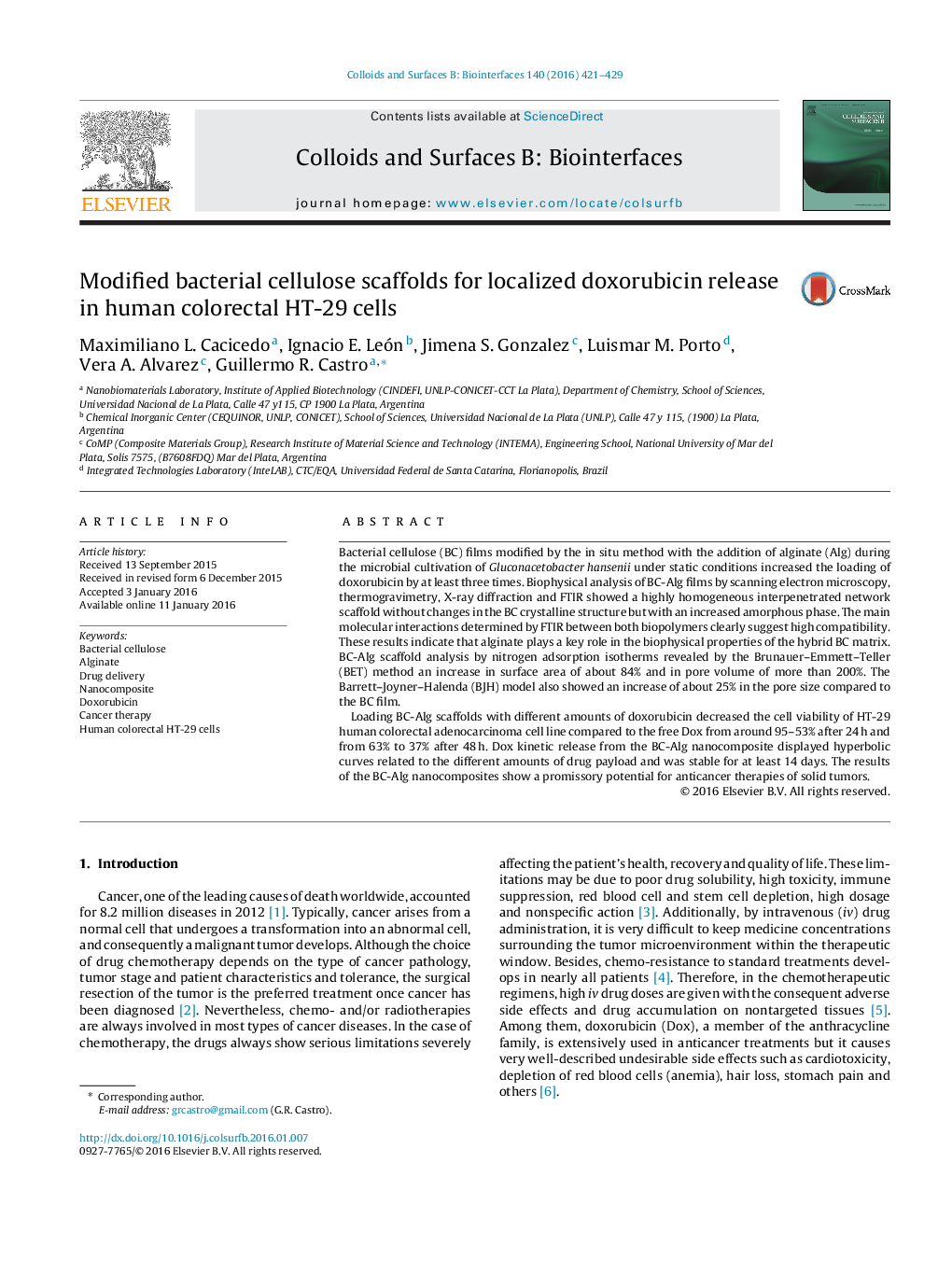| Article ID | Journal | Published Year | Pages | File Type |
|---|---|---|---|---|
| 599131 | Colloids and Surfaces B: Biointerfaces | 2016 | 9 Pages |
•In-situ modification of bacterial cellulose membranes with alginate was performed.•The hybrid bacterial cellulose–alginate membranes are able to control release doxorubicin.•FTIR, XRD, TGA and SEM of bacterial cellulose–alginate scaffolds showed strong interconnected hybrid network with enhanced hydrophilicity.•The bacterial cellulose–alginate matrix was able to incorporate from 3.7 μg/g to 11.0 μg/g doxorubicin/matrix range with linear responses.•Brunauer–Emmett–Teller and Barrett–Joyner–Halenda analyses of the bacterial cellulose–alginate scaffolds showed an increase of the surface area in about 84% and the rise of pore volume for more than 200% compared to BC films.•The bacterial cellulose–alginate containing doxorubicin showed high efficiency on killing HT-29 human colorectal adenocarcinoma cells compared to free doxorubicin in the same range concentrations.
Bacterial cellulose (BC) films modified by the in situ method with the addition of alginate (Alg) during the microbial cultivation of Gluconacetobacter hansenii under static conditions increased the loading of doxorubicin by at least three times. Biophysical analysis of BC-Alg films by scanning electron microscopy, thermogravimetry, X-ray diffraction and FTIR showed a highly homogeneous interpenetrated network scaffold without changes in the BC crystalline structure but with an increased amorphous phase. The main molecular interactions determined by FTIR between both biopolymers clearly suggest high compatibility. These results indicate that alginate plays a key role in the biophysical properties of the hybrid BC matrix. BC-Alg scaffold analysis by nitrogen adsorption isotherms revealed by the Brunauer–Emmett–Teller (BET) method an increase in surface area of about 84% and in pore volume of more than 200%. The Barrett–Joyner–Halenda (BJH) model also showed an increase of about 25% in the pore size compared to the BC film.Loading BC-Alg scaffolds with different amounts of doxorubicin decreased the cell viability of HT-29 human colorectal adenocarcinoma cell line compared to the free Dox from around 95–53% after 24 h and from 63% to 37% after 48 h. Dox kinetic release from the BC-Alg nanocomposite displayed hyperbolic curves related to the different amounts of drug payload and was stable for at least 14 days. The results of the BC-Alg nanocomposites show a promissory potential for anticancer therapies of solid tumors.
Graphical abstractFigure optionsDownload full-size imageDownload as PowerPoint slide
